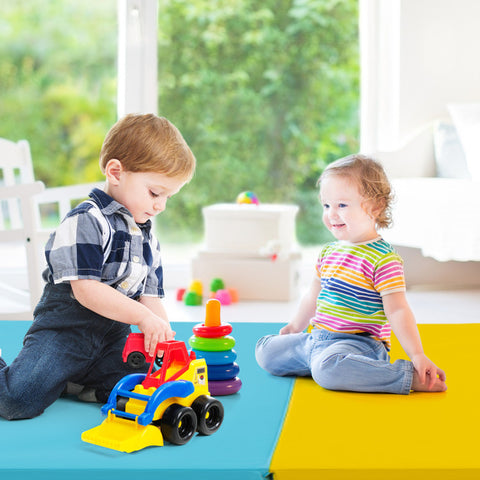News
How Gymnastics Mats Help Athletes Train for Other Sports Like Martial Arts and Yoga
Training for martial arts, yoga, wrestling, and acrobatics requires a safe and cushioned surface to protect athletes from impact-related injuries. Gymnastics mats provide the perfect shock absorption, grip, and support, making them a valuable addition to any home or gym training space.

1. Reducing Impact for Martial Arts Training
Martial artists frequently perform rolls, falls, and jumps, making impact protection a priority. Judo, Brazilian Jiu-Jitsu (BJJ), Taekwondo, and Karate all require controlled landings, which can put stress on the joints and muscles. Gymnastics mats help absorb shocks, reducing the risk of bruises, joint pain, and muscle strain.
2. Enhancing Balance and Flexibility for Yoga
For yoga practitioners, a firm yet cushioned surface is key to achieving proper posture alignment and core stability. Unlike traditional thin yoga mats, gymnastics mats provide extra support for advanced yoga poses, including handstands, backbends, and deep stretches. The added thickness also helps reduce strain on the knees, wrists, and spine during prolonged sessions.
3. Supporting Strength Training and Bodyweight Exercises
Many athletes use gymnastics mats for bodyweight exercises, calisthenics, and core workouts. The cushioned surface helps reduce stress on the elbows and knees during push-ups, planks, and sit-ups, making workouts more comfortable and effective.
Choosing the Right Gymnastics Mat for Different Sports
Not all gymnastics mats are created equal, and selecting the right one depends on the type of sport or training you’re focusing on.
1. Best Mats for Martial Arts
- Tatami-style mats: These offer excellent grip and shock absorption, preventing slips and falls.
- Folding mats: Ideal for home training as they provide portability and cushioning for striking and grappling moves.
2. Best Mats for Yoga and Flexibility Training
- Extra-thick gymnastics mats: These provide more cushioning than standard yoga mats, making them ideal for deep stretches and floor poses.
- Non-slip mats: A surface with better grip prevents slipping during complex yoga poses.
3. Best Mats for Strength and Conditioning Workouts
- Firm, high-density foam mats: These offer stability for calisthenics, plyometrics, and HIIT workouts.
- Interlocking mats: Great for covering larger areas in home gyms and fitness studios.
Safety Tips for Training on Gymnastics Mats
Using a gymnastics mat enhances safety, but proper precautions should still be followed to prevent injuries.
1. Always Train on a Stable Surface
Ensure that the mat is placed on a flat, non-slip surface to prevent shifting during movement.
2. Keep the Mat Clean and Dry
A sweaty or dusty mat can become slippery. Regularly wipe it down with a mild cleaner to maintain grip and hygiene.
3. Pair Mats with Proper Footwear or Barefoot Training
For martial arts, barefoot training allows better control, while yoga and flexibility training often benefit from a non-slip surface or grip socks.
4. Check for Wear and Tear
Inspect the mat for any tears, compression, or damage before each session. A worn-out mat loses its ability to cushion and protect against impact.
Conclusion
Gymnastics mats are not just for gymnasts—they provide a safe and effective training surface for martial arts, yoga, and strength training. Whether you're looking to improve balance, prevent injuries, or enhance flexibility, using the right gymnastics mat can significantly improve your training experience. By choosing a high-quality mat suited to your sport and following proper safety guidelines, athletes can maximize their performance while protecting their bodies.

